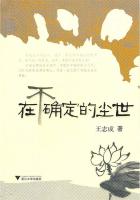For animal ethicists, the moral status of an animal is the moral value of the animal in its own right and for its own interests, irrespective of how it will affect human interests。 This understanding distinguishes contemporary animal ethics from Kant's notion that cruelty to animals is bad because it might induce cruelty to humans。For animal studies scholars, we should treat the animal issue for the animal's sake instead of for the sake of humanity。However, why should animals count morally?What is the criterion for animals'admission to the human moral community?The ancient questions remain pivotal and different theorists have different understanding。Largely speaking, there are three major theories:the sentience theory, the inherent-value theory, and the biocentric theory。
The sentience theory is championed by Peter Singer(1946—)。 He grounds his argument in Bentham's utilitarianism, believing sentience(the capability of experiencing pleasure and pain)to be the basis for moral consideration, instead of reason, intelligence, speech, or emotional power。As long as a being is capable of suffering, we should avoid inficting pain on it。For Singer, as for all utilitarian thinkers, pleasure is the intrinsic good, whereas suffering the intrinsic evil。That which may bring about pleasure is morally right, whereas that which may bring about pain is morally wrong。The fundamental principle is“equal consideration of interests”。Singer argues that the interests of animals should not be considered less than those of humans at a similar cognitive level, and in calculating whether the benefts of an action outweigh the harms it would bring about, the interests of animals must be given equal consideration。Nonetheless, he states that we have different obligations for animals that are rational and self-conscious, such as most vertebrates and mammals, from the obligations for those which are not, such as the invertebrates。
Tom Ragan(1938—)is a leading philosopher of the inherent-value theory。 His answer to the question about the criterion of animals'moral status is based on the concepts of rights, in the deontological paradigmof Kant。In his powerful book, The Case for Animal Rights(1983),he distinguishes two roles in moral consideration, moral agents and moral patients, separating those rational beings who can be responsible for their behavior from those that are mentally weak and are thus unaccountable for what they do。In this way he solves the difficulty in treating animals on an equal footing with human infants, young children, and the mentally deranged or the enfeebled。He further maintains that both moral agents and moral patients are individuals of equal inherent value, despite their different intrinsic value, that is, the kind of experience one has。He then puts forth the concept of subject-of-a-life, proposing it to be the criterion of inherent value。His defnition of“subject-of-a-life”embraces all intentional beings that have goals and would work towards them, including blacks, women, and sentient animals。But like Singer, he excludes organisms on the lower rung of the evolutionary scale。
The limitation of the sentience theory and the inherent-value theory is complemented by biocentric ethics。 It maintains that all organic life, human or nonhuman, sentient or nonsentient, possess intrinsic valuesand deserve equal respect。Biocentric ethics draws heavily on the philosophy of Albert Schweitzer(1875—1965),the German philosopher and humanitarian whose concept of“Reverence for Life”proposes the intrinsic respectability of all living things。Paul Taylor(1923—)develops Schweitzer's philosophy of“Reverence for Life”and formulates the fundamental concepts of biocentric ethics in Respect for Nature(1986)。He first claims that all living things have a good of their own because they are all“teleological centers of life”,tending towards the biological goals of growth, development, sustenance, and propagation。Consequently, all living things possess inherent worth and are objects of human duties。He then puts forward the normative claim of a biocentric outlook to conceptualize our relationship with other living things。Basically, biocentrism consists of four central beliefs:1)Humans are members of the Earth's community of life in the same sense and on the same terms as all other living things;2)All species, including humans, are part of a system of interdependence;3)All living things pursue their own good in their own ways;4)Humans are understood as not inherently superior to other living things(qtd。in DesJardins 139)。
With Taylor's concepts of biocentricism, the animal question is linked to the larger feld of environmental ethics。 The human-animal relationship becomes an integral component of a larger picture of the ecological community。The ideas of biological community, interdependence, intrinsic value, and human beings'equal biotic citizenship form a basis for its coalition with deep ecology, land ethics, ecocentrism, and holism。All are efforts to remedy the fallacies of anthropocentricism;all endeavor to view humans in the context of ecological balance and environmental sustainability。
The ethical consideration of animals also brings up the connection between animal oppression and other forms of oppression within the human community, i。 e。racial, sexual, and class oppression。Peter Singer has helped popularize the term“speciesism”,frst coined in 1970 by British psychologist and animal-liberation activist Richard Ryder as an analogue of“racism”and“***ism”,propounding that species is not a valid criterion for cruel discrimination。The term illuminates a common ground of animal studies, ethnic studies, and feminist studies, from where a large body of meaningful studies has been conducted。Mary Midgley's Animals and Why They Matter(1983),Marjorie Spiegel's Dreaded Comparison:Human and Animal Slavery(1988),and Carol Adams'The Politics of Meat:A Feminist-Vegetarian Critical Theory(1990)are a few excellent examples。Critical Studies of Animals Critical animal studies scholars believe that“attitudes to living animals are in a large part the result of the symbolic uses to which the concept of the animal is put in popular culture”(Baker 1993:25)。 Therefore, they set off to achieve the goal of change by looking into the human conception and perception of the animal。
In terms of political agenda, critical animal studies is a sister discipline of ecocriticism。Spurred by a concern that became exigent since the 1960s, the ecological crisis, both disciplines endeavor to draw critical attention to the relation between humans and the nonhuman world:animal studies focuses on the human relationship with the other animal species, while ecocriticism is concerned with the ecological community as a whole。 Like ecocriticism, animal studies calls to order the reexamination and reassessment of Western culture in search of a redefinition of mankind's place in the world。The ultimate goal is to reestablish a harmonious relationship between humans and nature。
In terms of theoretical methodology, animal studies follow the logic of poststructuralism, in particular, the propositions of decentering the subject, disrupting binary oppositions, and transgressing boundaries。 Poststructuralist sages such as Jacques Derrida, Gilles Deleuze, and Michel Foucault are important spiritual resources。Animal-studies critics want to carry further the revolutionary job of Foucault and his followers, whose decentering of the human subject they consider incomplete。As Erica Fudge points out,“[In the works of Foucault and his followers,][s]trategies of othering are examined, but only in terms of othering humans;the animal is a powerful rhetorical category into which some humans—the mad, the criminal—are placed。Real animals are not the issue”(2002:14)。
The titles of some representative publications are highly illustrative of the thematic enterprises of critical animal studies:“Why Look At Animals?”(Berger 1980),Picturing the Beast:Animals, Identity, and Representation(Baker 1993),Perceiving Animals:Humans and Beasts in Early Modern English Culture(Fudge 2000),Representing Animals(Rothfels 2003),Figuring Animals(Pollock and Rainwater 2005),and Animal Rites(Wolfe 2003),Animal Gaze(Woodward 2008),Animal Subjects(Castricano 2008),Animalizing Imagination(Bleakley 2000),and Poetic Animals and Animal Souls(Malamud 2003)。 Manifestly, there is a concentration of concerns on the way animals are represented and perceived by the human spectator, implicating a critique of the objectifcation and othering of the animal。A constructive view proposed is to look at the animal as subjects of“souls”,of autonomy and agency with which animals return the human gaze。
A shared understanding among animal-studies scholars is that the marginalization of animals in the human life is a modern event, one that had not started until the 18th century, in the wake of industrialization。 In the long history before this,“animals constituted the first circle of what surrounded man。[……]They were with man at the center of the world”(Berger 1980:1)。Literature of earlier cultures all indicated the affnity of humans and animals。Humans relied on animals not only for food, clothing, labor, and transport, but also oracular messages, symbols for divine power, moral metaphors, and companionship。Early cultures found man and animals both“like”and“unlike”(Berger),and this feeling of familiarity as well as mystery made animals a revered companion。As Jean Baudrillard is quoted saying,“animals have always had, until our era, a divine or sacrificial nobility that all mythologies recount。Even murder by hunting is still a symbolic relation, as opposed to an experimental dissection[……]”(qtd。in Bleakley 12)。It is Descartes'mechanistic view of animals in theEnlightenment and the 19th-century Industrial Revolution that expelled animals from the center of the human society。With the invention of the internal combustion engine of the 20th century and the growing pace of urbanization, draught animals, feld animals, and wild animals by and by disappeared from the human horizon。
In the contemporary culture, the real, authentic, direct contact with the animal is replaced by symbolic, metaphorical, and mediated relations;the intimate and affective is replaced by the exploitative and oppressive。 Animals become more and more displaced to the margin of the contemporary experience, as extinct or endangered species, tourist attractions in the zoo, pets at home, guinea-pigs for laboratory experiments, or, more frequently, milk or meat producing machines。On the other hand, the images of animals permeate every aspect of human life as cultural artifacts and symbols, dead but indispensable。For most scholars, this degradation of the animals'roles in the human life is the side-effect of modernism。Baudrillard is quoted again,“animals were only demoted to the status of inhumanity as reason and humanism progressed”(Bleakley 22;Malamud 2003:4)。In other words, there is a reversed process in the change of status of animals and man。While the position of man in the world has been dramatically elevated, that of the animal has been increasingly relegated。“It may be true to say that the more civilized the society, the worse are its attitudes towards animals”(Bleakly 30)。According to Berger, the historical loss of the companionship offered by animals to the“loneliness of man as a species”is now“irredeemable for the culture of capitalism”(1980:4,26)。Therefore, it is only logical that animal studies promotes a general critique of rationalism, industrialism, and anthropocentric humanism。
As has become apparent, the discussion of man is always related with the discussion of the animal in the Western history of philosophy。 Animal-studies scholars argue that animals have played a“potent and vital role in the symbolic construction of human identity”(Baker 1993:x)。People rely on animals to defne who they are。According to structuralist anthropologists, one of the main functions of animals in human culture is to stake out the perimeter of that culture:“humans use animals in order to specify clearly who they are and where the differences lie between themselves and the natural world, particularly between themselves and animals”(Franklin 12)。Whereas in societies outside the Western sphere, there are prevalent beliefs in the interdependent relationship between man and animals, the Western culture sticks to the dualistic thinking, seeing humans and animals as an oppositional pair, with man here and animals out there。Even in Berger's criticism of the degradation of the human-animal relation resulting from the“culture of capitalism”,signs of this dualism are discernible, as in its emphasis of the incomprehensibility of the animal gaze and the distinctiveness of the animal from the human(Malamud 2003:67)。
“[T]he human is only ever meaningful when understood in relation to the not-human,”Erica Fudge observes, using Saussure's paradigm that meaning consists in difference。She suggests that“human”in virtue is a category of difference:“The innate qualities that are often claimed to defne the human—thought, speech, the right to possess private property[……]—are actually only conceivable through animals”(Fudge 2002:10)。“Animals are vehicles, burdened with the anthropocentrically symbolic projections of our own minds”(Malamud 2003:4)。In order to secure man's position as the pinnacle of the world, animals are repressed in the Western culture as souless。As Steve Baker observes, the popular culture's stereotypes of animals as“lucky cows”or“cute cats”are in effect a process of what Roland Barthes terms as“naturalization”,a political distortion of the animal in order to“maintain the illusion of human identity, centrality and superiority”(1993:3-29)。
The chief goal for critical animal studies, therefore, is to“question and demythologize the idea of animal imagery as a‘natural'resource for saying-things-about-humans”(Baker 1993:x)and to combat the exploitative uses of animals both as real, living beings and as metaphors and symbols in human culture。 John Simons, a literary critic, rewrites Karl Marx's maxim that“the history of all hitherto existing society is the history of class struggles”into“the history of all hitherto existing society is the history of struggle between humans and non-humans”(7)。He calls for literary scholars to investigate“how literary studies can respond to the changes of attitudes towards animals that are now such an important part of popular consciousness and public debate”(5)。He himself sets off to examine the ways in which“animals appear in texts, are represented and fgured, in and for themselves and not as displaced metaphors for the human”(6)。More specifcally, in Poetic Animals and Animal Souls(2003),Randy Malamud proposes fve principles as an ecocritical aesthetic:seeing animals without hurting them;seeing them in their context;teaching about animals;advocating respect for them;and knowing them, richly but also incompletely(45)。
In a nutshell, the concern for the animal is growing into an exuberant field in cultural and literary studies。 As it becomes more and more consistent and systematic, animal studies will provide the humanities with a wider stage for their contribution to the restoration of human-nature harmony and ecological sustainability。
In the following discussion of Vonnegut's treatment of animals in his fiction, I employ the concepts and theories from both animal ethics and animal criticism。 While animal ethics offers perspectives of understanding the animals'ethical status and their maltreatment in the human society, animal criticism provides useful theoretical approaches and analytical tools。
C。 New Directions of Humanism:the Animal Turn
As Raymond Williams writes,“What is often being argued……in the idea of nature is the idea of man”(qtd。 in Peterson 1)。Most of the philosophers attending to the discussion of the animal question are also humanist thinkers。The question of the human and that of the nonhuman are inseparable。To a great extent,“animal liberation is human liberation too”(Singer 1990:vii)。Mahatma Gandhi has also made the point that“[t]he progress of a nation and its moral progress can be judged by the way its animals are treated”(qtd。in Castricano 1)。In the historical course of changing attitudes towards animals, we see the trajectory of the evolution of humanism。From its initial exhilaration at the emancipation of humanity to the overweening pride in human supremacy, through a process of action and reaction, inheritance and revolt, humanism has arrived at an era that calls for an internal transformation, one that is marked with the opening up of boundaries。
Mary Midgley has noted that the central concepts of humanism such as equality, justice, liberty, and fraternity have no built-in limits and are themselves essentially tools for widening concerns。 They have the potential to break down prejudices that constrict their power of concern。Historically, this has been repeated many a time。To some extent, the human history is a process of boundary destruction and reconstruction, with its domain of humanitarian consideration expanding all along。Race, gender, class, ethnicity, nationality, age, sexuality, and disability……all have been blocks that have been or are being removed。With these intra-human barriers tackled, the time has come for speciesism—the barrier between human and nonhuman species—to be cleared away。
The latest development of humanism indicates such an animal/ecological turn。 Three major derivations sprang from the tradition of antihumanism in the Western thought, as represented by Nietzsche, Sartre, Adorno, Althusser, and Foucault。They are inhumanism, transhumanism, and posthumanism。All these new developments of humanism have attached importance to the deterioration of the natural environment in their treatment of humanity。Inhumanism, a term coined by the postwar American poet and environmental thinker Robinson Jeffers(1887—1962),is meant to alert readers to the spiritual danger of human egocentrism and to awaken them to an order of beauty and truth beyond the human sphere。For Jeffers, the natural world has much more primacy over the human world, and he calls inhumanism“a shifting of emphasis from man to non-man;the rejection of human solipsism and recognition of the transhuman magnifcence”(preface to The Double Axe,1948)。His famous remark“I'd sooner, except the penalties, kill a man than a hawk”is echoed in the sardonic declaration of the contemporary American environmentalist Edward Abbey,“I'd rather kill a man than a snake”in Desert Solitaire。It might be because of this bold radicalism that the term hasn't gone beyond the small circle of Jeffers enthusiasts。As Tony Davies puts it, it sounds too close to“inhumanity”(136)。But the emphasis of the beauty and integrity of the natural world catches on and becomes an integral part of environmental ethics。
Instead of a conceptual revolution,“Transhumanism”looks to science(prosthetics, cryonics, genetics, and nano-technology)for human survival in a degraded world。 The transhuman is a biotechnological“Superman”that transcends mankind's historic limitations。Joe Garreau explains that transhumanism is dedicated to“the enhancement of human intellectual, physical, and emotional capabilities, the elimination of disease and unnecessary suffering, and the dramatic extension of life span”by means of engineered evolution(qtd。in Wolfe 2010:xiii)。The supreme confdence in science and technology and the belief in the human capability of transcending its biological limits defne transhumanism as an extension of the hubris of the Renaissance and Enlightenment humanism。In the words of Cary Wolfe, transhumanism is“an intensifcation of humanism”(2010:xv)。
Of the three contemporary derivations of humanism,“posthumanism”enjoys the widest circulation。 The term was frst brought up by Ihab Hassan in a 1977 essay when he says,“We need to understand that fve hundred years of humanism may be coming to an end, as humanism transforms itself into something that we must helplessly call posthumanism”(qtd。in Badmington 2)。We now quite frequently come across expressions such as“the posthuman world”,“the posthuman condition”,the evolution of“post-humans”,etc。Despite its growing popularity, however, posthumanism as an emergent branch of philosophy remains unclear in defnition and uncertain in tenets。Some people consider“posthumanism”as“after humanism”,referring to the cultural continuity of the philosophical enthroning of man。Others, on the contrary, think the term refers to the condition after the philosophical decentering of man。Some other people see value in the term's signification of the drastic changes in the classic definition of man in a technologically and metaphysically transformed postmodern world。
For Tony Davies, author of Humanism(1997),“posthumanism”resembles“postmodernism”in that the suffix“post-”signifies both continuity and rupture,“continuity in its ongoing preoccupation with humanist themes of identity, liberty and secular morality;rupture in its rejection of the privileged position accorded to humankind among other concepts and life forms”(152)。For Neil Badmington, editor of a collection of essays under the title Posthumanism(2000),posthumanism inherits something of its“post-”from poststructuralism, or more specifcally, from Derrida's theories of deconstruction。“Humanism never manages to constitute itself;it forever rewrites itself as posthumanism。This movement is always happening:humanism cannot escape its‘post-'”(9)。For both Davies andBadmington, any critique and denial of the classic humanist concepts, such as the sovereignty of reason and the autonomy of man, are acts of posthumanism。
Cary Wolfe, a founding figure in animal studies and posthumanist theories, acknowledges the“different and even irreconcilable”definitions of posthumanism and makes great efforts to clear away the confusion(2010:xi)。 Firstly, he distinguishes“transhumanism”from“posthumanism”,maintaining that transhumanism inherits rather than rebels against Renaissance humanism and the Enlightenment ideals of human perfectibility, rationality, and agency, thus it should be seen as an“intensification of humanism”,or“bad”posthumanism(xvii)。Secondly, he clarifies the signification of“post-”。For Wolfe,“posthumanism isn't posthuman at all—in the sense of being‘after'our embodiment has been transcended—but is only posthumanist, in the sense that it opposes the fantasies of disembodiment and autonomy, inherited from humanism itself[……]”(xv)。
In a further explanation, he says,My sense of posthumanism is thus analogous to Jean-Francois Lyotard's paradoxical rendering of postmodern:it comes both before and after humanism:before in the sense that it names the embodiment and embeddedness of the human being in not just its biological but also its technological world, the prosthetic coevolution of the human animal with the technicity of tools and external archival mechanisms(such as language and culture)[……]all of which comes before that historically specifc thing called“the human”that Foucault's archaeology excavates。 But it comes after in the sense that posthumanism names a historical moment in which the decentering of the human by its imbrication in technical, medical, informatic[sic],and economic networks is increasingly impossible to ignore[……](xvi)
The core of this definition, I think, is twofold。 First, posthumanism insists on materiality and embodiment, as opposed to humanism's emphasis of transcendence and disembodiment;second, posthumanism believes in the realization of the removal of man from the center of the world, as opposed to humanism's celebration of the centrality of humanity。As a leading figure in animal studies, Wolfe also makes a strong point about the place of the discussion of the animal question in posthumanist undertakings, distinguishing two ways of thinking:humanist posthumanism and posthumanist humanism by denoting the signifcance of both subjects of study and the theoretical and methodological approaches。Wolfe's writing is famous for its convoluting and obtrusive style。As one commentator notes, beyond the theoretical density in his elusive writing and his constant reference to Derrida, Foucault, Latour, Deleuze, and Niklas Luhmann, there is little we can grasp for a central understanding of posthumanism。The confusion that Wolfe undertakes to clarify remains。As in the case of postmodernism, the legitimacy of posthumanism in the public and academic discourse will stay in debate for quite some time, and its theoretical tenets are yet to be further formulated。
For all the confusion and limitations in these new directions of humanism, a common tendency has begun to manifest:the conscious effort to reexamine and reevaluate classic humanism's contentions in a larger context—the ecological and planetary as well as the social。 The discussion of humanity is frequently accompanied by and related to the discussion of animals and the natural environment。The cause for this animal/ecological turn is obvious。As Davies has noted, of all the scenarios of the“death of man”,the primary worry identifed in recent years is that of the ecological catastrophe and the impending danger of the extinction of the human species, the probability of which is created and enhanced by nobody but man himself, in his“reckless enlargement of the bounds of empire”(Davies 131)。To confront such dismaying prospects, contemporary intellectuals notonly adopt the critical tradition of antihumanism, but also have to include animals and nature into their interrogation of humanism。













